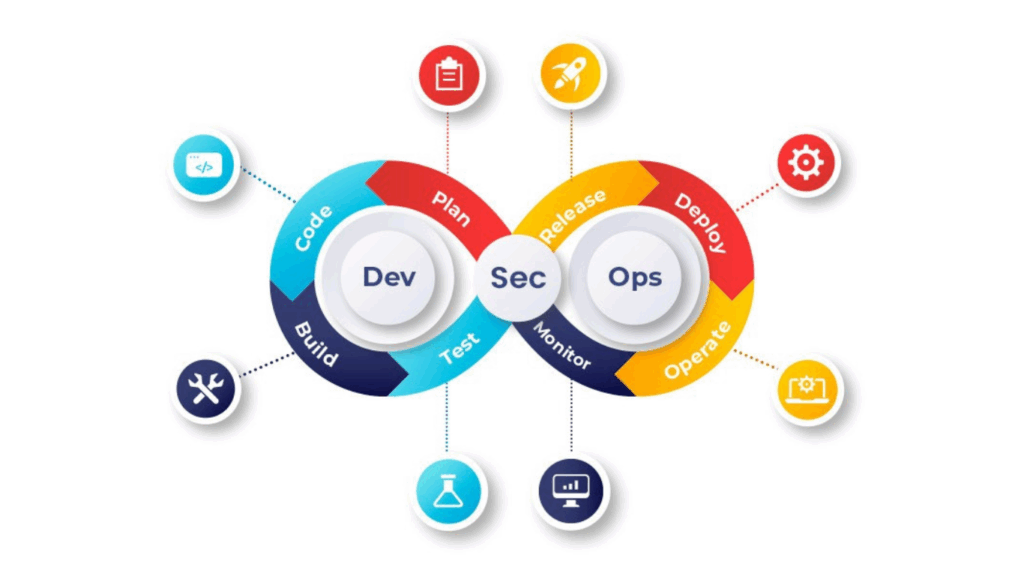Statista reports that 72% of businesses used DevOps in the year 2018. These groups of techniques, which were first announced in 2009 but are currently gaining ground quickly, are compelling companies to alter the way they create software.
DevOps approaches essentially have two main objectives: reducing the development lifecycle; ensuring continuous delivery while maintaining the quality of the products.
DevOps has a lot of advantages for businesses. Most notably, this DevOps approach assists businesses in implementing a distinct and effective role segmentation based on the ideas of CI (Continuous Integration) and CD (Continuous Delivery). To deliver products more quickly and effectively, it builds on the culture of team cooperation by integrating the appropriate specialist into the process at the appropriate time.
One way DevOps ensures faster time to market is by the constant automation of repeated operations that would otherwise consume excessive amounts of time and resources. There are good QA courses available that teach DevOps so you can enrol at any one of your choice.
As a result, automation is a crucial component of DevOps. Now that we have returned to our subject, it is critical to emphasise the value of QA in such a highly automated setting. Teams frequently repeat the same error while trying to cut costs, time, and effort by putting too much emphasis on workflow efficiency but not enough on product quality. Teams should instead remember that despite all the benefits of quality assurance automation, human engineers are still essential for the procedure. Manual quality assurance still plays a significant role in DevOps and we will explain why in this article.
Manual VS. Automated QA
If you are a provider of software QA services, then you can use both human and automated testing methods. Each technique serves a particular goal and has a few advantages and disadvantages. To ensure optimal effectiveness and final quality, automated and manual software testing should coexist.
Advantages of the manual testing approach
1.Avoiding errors in automation.
Software testing can sometimes contain human faults. But, if a mistake is made by a human specialist, he or she will probably be able to identify it and come up with a repair.
Unfortunately, a machine cannot detect an issue while using automated testing. It only acts in accordance with a predetermined set of human-defined activities.
2.Saving time.
You might wonder how time can be one of the advantages of manual testing if automated testing is intended to save QA engineers’ time and resources in the first place. It seems sensible to be worried. Would it surprise you to learn that a manual technique can occasionally be more time and resource efficient than an automated one? Indeed, that is accurate.
To start, it is important to note that, depending on the complexity of the product, creating an automated test case can require more time and resources. If you want to test many similar products in the future, it is not a major deal. Manual testing, however, may be a better strategy if it’s a one-time project.
If changes are made to the product on a regular basis, manual testing may also be used in the DevOps environment. Automated tests must also be modified when changes are made, which can delay the release date.
3.Removing erroneous positive and negative results.
Automation testing may be more susceptible to undetected false positives and negatives in more complicated situations. This could be a major roadblock for the QA procedure. It is just another instance where manual testing is superior.
4.Bringing creativity and skill to the testing process.
Automated tests never deviate from a predetermined list of instructions, in contrast to manual tests, which presuppose zero originality throughout the procedure. And this is one of the main advantages of manual testing over automated testing. If an engineer simply has a basic understanding of manual testing, it could not really matter.
But, if you hire a specialist with extensive experience in a particular sector or a trustworthy QA testing agency, their expertise can be vital in identifying flaws that a machine can’t.
Conclusion
The field of software development is complex and dynamic. Also, it is very competitive. Every year, hundreds of thousands of new products are released, thus businesses’ desire to automate the development and QA cycle is understandable. This is a smart approach that allows QA engineers to concentrate on other parts of testing while cutting down on the time, effort, and expense of quality assurance.
Also, it contributes to the prompt and seamless release of goods. Notwithstanding the advantages of test automation, a manual approach will always have a place. Automation can never completely replace quality assurance manual testing, no matter how advanced it becomes. In the end, a human engineer is always required to assess the product from the user’s perspective and to identify more intricate and unanticipated flaws. Enroll in a good QA training to learn more about DevOps and Manual testing.






























One Response